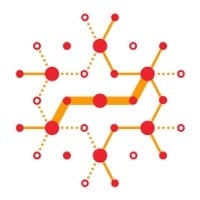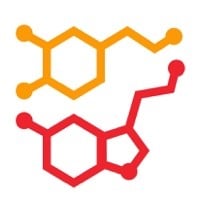Overview
The Journal of Neurochemistry is dedicated to disseminating research covering all aspects of neurochemistry. The journal scope includes studies on genetic, molecular, cellular and biochemical aspects of the nervous system, the pathogenesis of neurological and psychiatric disorders, and the development of specific biomarkers for nervous system diseases and conditions. We prioritize original research that mechanistically demonstrates an advance as well as critical reviews that highlight progression of knowledge in the field. The Journal of Neurochemistry is devoted to the prompt publication of original findings of the highest scientific priority and value that provide novel mechanistic insights, represent a clear advance over previous studies and have the potential to generate exciting future research.
The Journal of Neurochemistry does not publish work relating to biological extracts of unknown chemical composition or purity. All compounds reported must have a known chemical structure and concentration.
The Journal of Neurochemistry publishes full-length presentations of significant original findings, and also narrative and systematic reviews, submitted by investigators with relevant expertise. Articles are published in the following categories. Please note that these definitions are not exhaustive, and your research may fall into more than one category.









The Journal of Neurochemistry encourages the use of ORCID, a non-profit, community-based effort to uniquely identify authors and link articles and other research activities to specific individuals. Authors have the opportunity to add their ORCID identifier to their user profiles on https://wiley.atyponrex.com/journal/JNC or upon submission of an article. Once you provide your ORCID identifier, it will be tied to your profile and automatically available for future submissions. Further information can be found on http://orcid.org/
Why publish in Journal of Neurochemistry?
Simplified and Easy Submission Process
We make it easy for you to submit papers through our streamlined online process. Once your paper is submitted, you can keep track of its progress through our detailed production tracking service on Author Services. Our Author Centre helps you access the editing and translation service and promotional tools to help you maximize the outreach of your article. We also provide access to relevant information about your published article including article level metrics.
Quality Peer Review
Qualified reviewers and constructive comments are the keys to a great review. At the Journal of Neurochemistry, our reviewers are among the top researchers in their fields, and we pride ourselves on providing detailed and workable comments and critiques. We cut down on revision times by giving precise feedback at the start, so that you and your colleagues know exactly how to edit your work for publication. Our goal is to work with you to make each paper a valuable contribution to the field.
Fast Decision and Publication Times
Faster decision and publication times mean that your research has an impact quickly —it is read and cited sooner! The Journal of Neurochemistry achieves an average 27 days to first decision.
Expanded Access for Your Article
The Journal of Neurochemistry offers an Open Access option and is compliant with public access policies from NIH, RCUK and other funders. We offer APC discounts for members of the International Society for Neurochemistry. All review articles are free from online publication. The Journal of Neurochemistry supports access to researchers in developing countries through the Research 4 Life initiative. All articles are in enhanced HTML format, which includes figure and reference viewers, and links to supporting information. PDF versions include reference links to supporting information in an online-friendly format. PDFs are enhanced with ReadCube, which makes all text searchable and annotatable and provides simple click-through to author and reference information.
For author guidelines, click here.
Full archive online
Every issue of the Journal of Neurochemistry is available online from volume 1, issue 1 (May 1956). This archive is available free to all International Society for Neurochemistry (ISN) members. Institutions can purchase these backfiles (1956-1996 issues) for a one-off fee for archival rights and access in perpetuity: click here for details. All content from 1997 volumes onwards is made freely available to all users 12 months from publication.
NIH-funded authors and Journal of Neurochemistry
The NIH is mandating grantees to deposit their peer-reviewed author manuscripts in PubMed Central, to be made publicly available within 12 months of publication. The NIH mandate applies to all articles based on research that has been wholly or partially funded by the NIH and that are accepted for publication on or after April 7, 2008.
In order to help authors comply with the NIH mandate, for papers accepted for publication in the Journal of Neurochemistry after this date, Wiley-Blackwell will post the accepted manuscript (incorporating all amendments made during peer review, but prior to the publisher’s copy-editing and typesetting) of articles by NIH grant-holders to PubMed Central at the point of acceptance by the journal. This version will then be made publicly available in PubMed Central 12 months after publication. Following the deposit, Wiley-Blackwell authors will receive further communications from the NIH with respect to the submission. For further information, see here.
If authors wish to make their final published article openly accessible and without a 12-month embargo, they can choose to publish via the Open Access service.
Wellcome and HHMI grantees can find out further information here.
Keywords
Journal of Neurochemistry, neurochemistry, biochemistry, neuroscience, molecular biology, cell biology, nervous system, pharmacology, histochemistry, immunology




